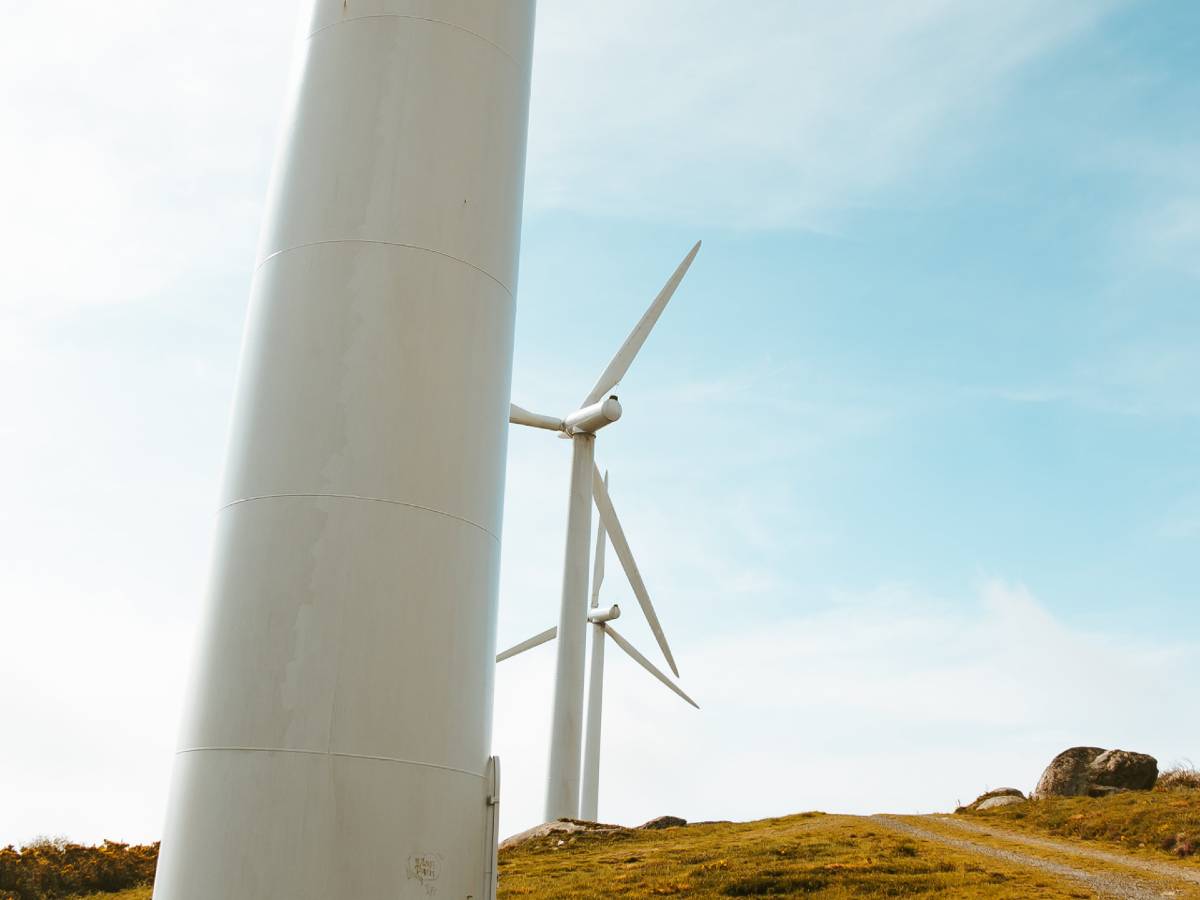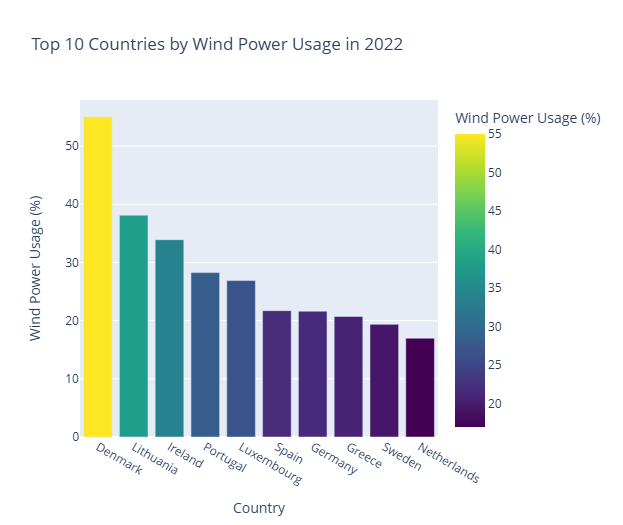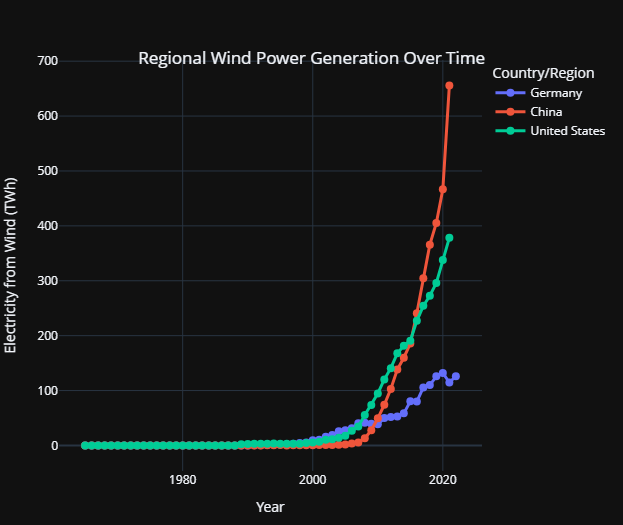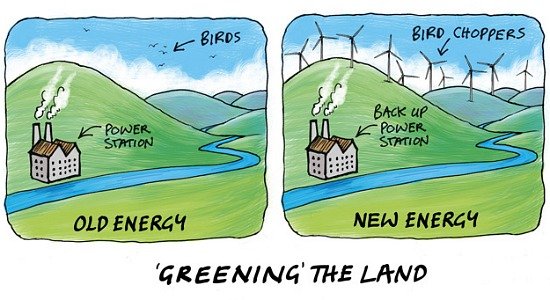
As the world pushes towards a greener future, wind power has emerged as a frontrunner in renewable energy solutions. However, a fundamental issue continues to plague this technology: wind doesn’t blow consistently.
This simple fact has far-reaching implications for the viability of wind power as a primary energy source, particularly as more countries increase wind energy production.

The intermittent nature of wind presents a significant challenge for power grids. When the wind stops blowing, energy production grinds to a halt, necessitating backup power sources to maintain a stable electricity supply. This backup is typically provided by fossil fuel-based sources like natural gas, which raises an important question: If we need a reliable backup system of equal capacity, what’s the point of investing in wind power at all?
The environmental cost of wind power is also often overlooked. A two-megawatt wind turbine, for instance, requires 260 tons of steel, which in turn demands 300 tons of iron ore and 170 tons of coking coal. The production and transportation of these materials rely heavily on hydrocarbons. Furthermore, each turbine consumes over 2,600 gallons of petroleum-based lubricants annually. This raises concerns about the true ‘renewability’ of wind power and its impact on landscapes and resources.
In this article
Germany’s Wind Energy Dilemma

Germany, long considered a leader in renewable energy adoption, is facing significant challenges with its wind energy proposals, highlighting the complexities of transitioning to a renewable-based power system. Recent developments in the country offer valuable insights into the practical difficulties of implementing wind power on a large scale.
The German Economic Ministry’s controversial plan to charge higher electricity rates on cloudy days and during periods of low wind has sparked intense debate. This proposal, part of a broader strategy to promote renewable energy usage, aims to increase Germany’s renewable energy share to an ambitious 80% by 2030. However, the plan has met with significant resistance from various sectors of society.
“This plan amounts to a totally crazy weather roulette,” says Christoph Ahlhaus, head of the BVMW, a lobby group for small and medium-sized businesses. His statement reflects the widespread concern among German businesses about the unpredictability such a pricing model would introduce into their operations.
The proposal suggests implementing a dynamic pricing model where electricity transmission charges would rise when solar panels and wind farms are less productive. This approach is designed to encourage consumers to reduce their energy use during these times. However, it has raised alarm bells in the business community, which argues that such a system could seriously harm their competitiveness.
“Machinery needs reliable electricity every hour of the day, every day of the year,” Ahlhaus adds, highlighting the impracticality of aligning industrial processes with weather patterns. This sentiment is echoed by the Economic Council, representing over 10,000 businesses, which warns that matching production to the weather “is either technically impossible or would lead to such low efficiency that we would be hopelessly outmatched by European competitors.”
The German situation is particularly noteworthy because the country already has some of the highest electricity prices in Europe. Transmission charges account for about a third of these costs. The proposed plan could potentially exacerbate this issue, leading to even higher energy costs for both businesses and households.
Dr. Klaus Mueller, an energy policy expert at the University of Berlin, explains, “This proposal essentially acknowledges a fundamental flaw in relying heavily on wind and solar power – the mismatch between supply and demand. It’s an admission that a volatile system based on these sources can’t always match supply to demand.”
The plan also raises concerns about energy poverty. With potentially higher rates during periods of low renewable energy production, households may find themselves spending a larger portion of their income on energy. This could disproportionately affect low-income families who are already struggling with high energy costs.
Germany’s experience serves as a cautionary tale for other countries pursuing aggressive renewable energy targets. It underscores the need for comprehensive planning that takes into account not just the environmental benefits of renewable energy, but also its economic and social impacts.
Moreover, Germany’s challenges highlight the importance of maintaining a diverse energy mix. The country’s decision to phase out nuclear power has increased its reliance on coal and gas as backup power sources, somewhat contradicting its climate goals. This situation emphasizes the complexities of energy transitions and the potential unintended consequences of well-intentioned policies.
“Germany’s experience shows that transitioning to renewables is not just about building wind farms and solar panels,” says Dr. Mueller. “It requires a fundamental rethinking of our entire energy system, from production and distribution to pricing and consumption patterns.”
As countries worldwide grapple with the urgent need to address climate change, Germany’s wind energy proposals and their reception offer valuable lessons. They highlight the need for balanced, well-thought-out policies that consider the full spectrum of impacts – environmental, economic, and social.
The impact of severe wind conditions in Australia
Recent events in Australia have further highlighted the vulnerabilities of wind power. Severe weather with gale-force winds reaching up to 146 kilometers per hour led to significant disruptions, including power outages affecting around 31,000 homes in Victoria. Surprisingly, many wind turbines were reportedly not functioning during these high winds, raising questions about their resilience and operational reliability during extreme weather events.
Many wind turbines reportedly failed to operate during these high winds, raising concerns about their resilience and reliability in extreme weather. This has sparked discussions about the design and operational protocols of wind energy systems in areas prone to severe weather.
The outages underscore the challenges of relying on wind power as a consistent energy source, especially during adverse weather conditions when energy demand may peak.
Grid Stability and Economic Viability

Grid stability is a cornerstone of reliable electricity supply, and it’s an area where wind power faces substantial challenges. Traditional power sources like coal, gas, and nuclear plants provide what’s known as “grid inertia” – a crucial element in maintaining frequency stability. This inertia comes from the kinetic energy stored in the large rotating masses of their generators.
“Grid inertia is just the frequency stabilization that comes from the kinetic energy of large rotating generator masses,” explains Dr. Emily Thornton, a power systems engineer at the National Renewable Energy Laboratory. “As the grid load ‘instantly’ increases, the frequency sags and the generator wants to slow down. But by slowing, it also ‘instantly’ injects some of its rotational kinetic energy until the driving source can be turned up to compensate.”
Wind turbines, however, provide zero grid inertia. This lack of inherent stability means that as wind power’s share in the energy mix increases, additional measures must be taken to ensure grid stability. One solution is the use of synchronous condensers, which can provide the necessary frequency support. However, these come with their own set of costs and complications.
The Australian Energy Market Operator (AEMO) has been grappling with this issue as wind power’s share in the country’s energy mix grows. In a recent report, AEMO stated, “The transition to higher penetrations of renewable energy sources is reducing the inherent inertia available in the power system, creating challenges for maintaining system security.”
The Subsidy Dependency
The economic viability of wind power is another area of concern. While proponents often tout wind as a cost-effective renewable energy source, critics argue that its true costs are often hidden or subsidized.
One of the main issues is the intermittent nature of wind power. Because wind doesn’t blow consistently, wind farms require backup power sources to ensure a stable energy supply. This redundancy in power generation capacity significantly increases the overall cost of wind energy.
Dr. Mark Henderson, an energy economist at the University of Cambridge, explains, “When you factor in the cost of backup power generation, which often sits idle but must be maintained and ready to go at a moment’s notice, the true cost of wind power can be substantially higher than what’s typically reported.”
Furthermore, the wind power industry has shown a strong dependency on government subsidies. Investment in wind energy often falls sharply when these subsidies are reduced or removed, suggesting that the technology may not yet be competitive in a free market environment.
In Germany, for example, the end of certain wind power subsidies led to a significant drop in new wind farm installations. According to the German Wind Energy Association, new onshore wind power capacity fell by 55% in 2019 compared to the previous year, coinciding with changes in the country’s subsidy policies.
Beyond the direct costs, there are other economic factors to consider. The need for grid upgrades to accommodate the variable nature of wind power can be substantial. In some cases, new transmission lines must be built to connect remote wind farms to population centers, with these costs often being passed on to consumers.
Moreover, the environmental costs of wind turbine production and disposal are rarely factored into economic assessments. The massive amount of raw materials required for turbine construction, including rare earth metals, and the challenges of recycling decommissioned turbines, add to the overall economic and environmental footprint of wind power.
RELATED: The Hidden Environmental Costs of Wind Turbines
Environmental impact of decommissioned wind turbines
As the push for renewable energy continues, an often-overlooked aspect of wind power is coming to light: the environmental impact of decommissioned wind turbines. This growing concern casts a shadow over the green credentials of wind energy and raises questions about its long-term sustainability.
Wind turbines, touted as clean energy producers during their operational life, present significant environmental challenges at the end of their lifecycle. The average lifespan of a wind turbine is 20 to 25 years, after which they must be decommissioned. However, the process of dismantling and disposing of these massive structures is far from environmentally friendly.
One of the most pressing issues is the disposal of turbine blades. These enormous components, often measuring up to 300 feet long, are made of composite materials that are extremely difficult to recycle. As a result, many decommissioned blades end up in landfills, creating a new waste management crisis.
“We’re creating a new environmental problem as we try to solve an existing one,” says Dr. Sarah Thompson, an environmental scientist at the University of California, Berkeley. “These blades are ending up in landfills, where they’ll take centuries to decompose, if they ever do.”
The scale of this problem is staggering. In the United States alone, it’s estimated that 720,000 tons of blade material will need to be disposed of over the next 20 years. This material is not biodegradable and contains toxic resins that can potentially leach into soil and groundwater.
RELATED: The Hidden Costs of Renewable Energy
Land use is another significant concern. The decommissioning process involves removing not just the turbines but also their massive concrete foundations, which can be up to 40 feet deep. This process can be highly disruptive to local ecosystems, causing soil compaction and habitat disturbance.
Moreover, the carbon footprint of wind turbines extends beyond their operational life. The manufacturing, transportation, and decommissioning processes all contribute to greenhouse gas emissions. A comprehensive lifecycle assessment is necessary to truly understand the overall environmental impact of wind energy.
“When we factor in the entire lifecycle of wind turbines, including decommissioning, the carbon savings are not as substantial as often portrayed,” explains Dr. Robert Chen, an energy policy analyst at MIT. “We need to be honest about these hidden costs if we’re to make informed decisions about our energy future.”
Efforts are being made to address these issues. Some companies are exploring innovative recycling methods for turbine blades, such as grinding them up for use in construction materials. However, these solutions are still in their infancy and not widely implemented.

The environmental impact of decommissioned wind turbines also extends to biodiversity. While the removal of turbines can initially disrupt local wildlife habitats, there’s potential for biodiversity recovery if the land is properly restored. However, this requires careful management and long-term commitment.
As we grapple with the urgent need to transition to renewable energy sources, the turbine graveyard dilemma serves as a stark reminder that no energy solution is without its environmental costs. It underscores the importance of considering the full lifecycle of energy technologies and the need for innovation not just in energy production, but also in waste management and recycling.
The wind power industry must confront these challenges head-on to truly live up to its promise of clean, sustainable energy. As Dr. Thompson puts it, “We need to solve the end-of-life problem for wind turbines if we want wind energy to be a truly sustainable solution for our future.”
This growing environmental concern, coupled with the issues of grid stability and economic viability, paints a complex picture of wind power’s role in our energy future. It highlights the need for a holistic approach to renewable energy, one that considers not just the immediate benefits but also the long-term environmental and economic consequences of our energy choices.
As we navigate the complex landscape of renewable energy, it’s clear that wind power, while promising in many aspects, faces significant challenges. The intermittency issue, coupled with economic and environmental concerns, suggests that a more balanced and diverse approach to renewable energy might be necessary to create a truly sustainable and reliable power grid for the future.
References:
German businesses dismiss ‘crazy’ plan to charge more for electricity on cloudy days, The Telegraph, 27 August 2024
Bureau issues multiple warnings as fierce winds over southern Australia brings potential record heat to Sydney and Brisbane, Thursday 29 Aug







